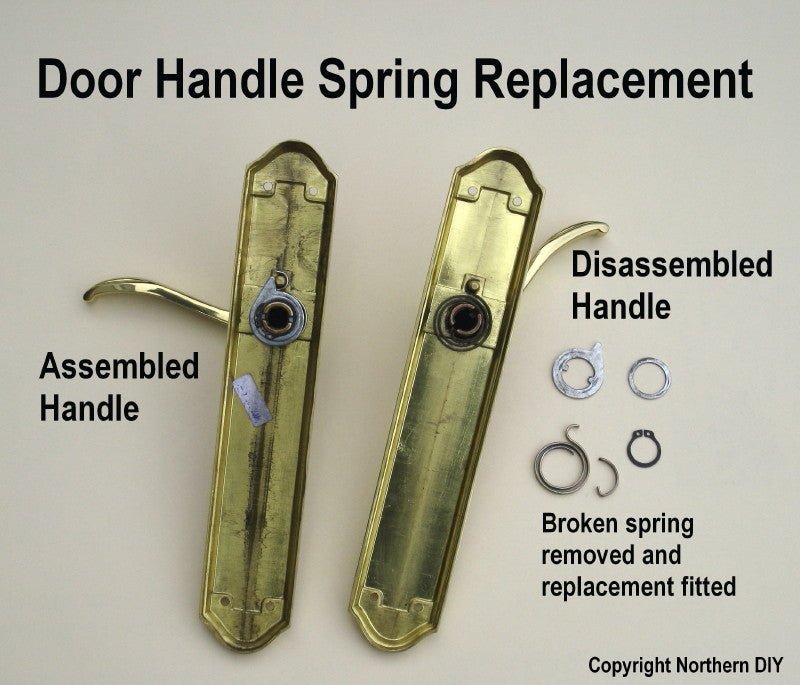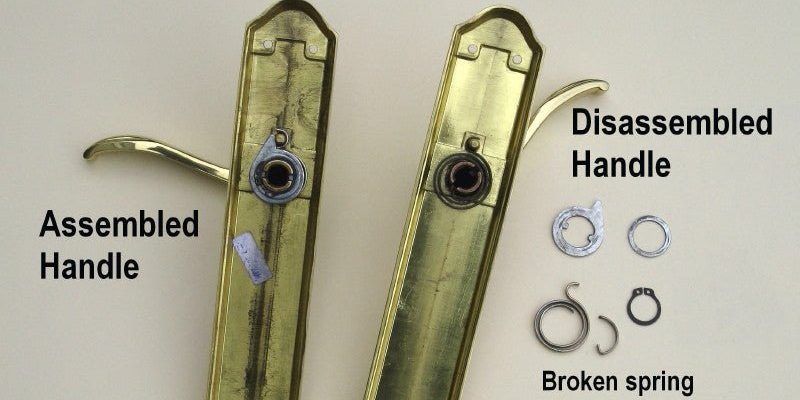
Diagnosing problems with a door knob’s external spring is simpler than it sounds. Just like a car that makes strange noises when something’s off, your door knob can give you clues about what’s wrong. Here’s the thing: you don’t need to be a handyman to fix it. With a bit of guidance, you can pinpoint the issue and get your door knob back on track. We’ll walk through this process together so you feel confident tackling the problem yourself.
Let’s dive into understanding the key components of your door knob, signs that something might be off, and how to get it working again. You might be surprised at how straightforward this can be!
Understanding the Role of the External Spring
Before we jump into diagnosing problems, it’s helpful to know what the external spring does. Think of it as the door knob’s lifeline. The external spring helps return the knob to its original position after you turn it. This action is essential for the latch to engage properly. If the spring is worn out or broken, the knob might feel loose, or it may not turn at all.
In most door knobs, you’ll find two types of springs: internal and external. The external spring is usually more visible and attached to the visible part of the knob. It’s important because it’s what provides the necessary tension. If it’s not working, you could face complications, like doors not latching or staying closed, which is a real hassle.
So, how do you know if the external spring is malfunctioning? Let’s explore the telltale signs.
Common Signs of a Faulty External Spring
There are several indicators that your door knob’s external spring might be on the verge of failure. If you notice any of the following, it’s time to investigate further:
- Loose or Wobbly Knob: If the knob feels loose or wobbles when you turn it, this could point to a spring issue.
- Difficulty Turning: If the knob is stiff or doesn’t turn smoothly, the spring may be unable to provide the necessary tension.
- Knob Sticking: A knob that sticks instead of returning to its resting position can signify a broken spring.
- Door Not Latching: If your door doesn’t close fully or latches incorrectly, the spring could be the culprit.
Pay close attention to how the knob feels when you use it. You might be wondering, “Should I just replace the whole knob?” Not yet! Many times, fixing the spring can save you time and money.
Step 1: Inspecting the Door Knob
When you suspect something’s off, the first thing to do is inspect the door knob. To get started, you’ll need a few tools: a screwdriver and maybe a flashlight. Here’s how to do it step-by-step:
1. Remove the Knob: Use the screwdriver to take off the knob. Look for screws that hold it in place. You might need to unscrew both sides.
2. Check the Spring: Once the knob is off, examine the external spring. Look for any signs of damage, like bends or breaks.
3. Test the Mechanism: Try to manually push the spring down. If it doesn’t return to its original position easily, there’s likely an issue.
A thorough inspection can often reveal what’s wrong. It’s similar to checking a car; sometimes, you just need to pop the hood to see what’s going on.
Step 2: Fixing or Replacing the Spring
If your inspection shows that the external spring is indeed damaged, you’ll need to decide whether to fix it or replace it. If it’s simply off-kilter, you might be able to readjust it. Here’s what to do:
– Realigning the Spring: If the spring isn’t broken but misaligned, gently reposition it using your fingers. Make sure it sits properly in its casing.
– Replacing the Spring: If the spring is broken, it’s best to replace it. You can usually find replacement springs at hardware stores or online. Look for one that matches the size and type of your knob.
Taking these steps is often straightforward, and you’ll feel that satisfying sense of achievement that comes from fixing something yourself!
Step 3: Reassembling the Door Knob
Once you’ve either fixed or replaced the external spring, it’s time to put everything back together. Here’s how to reassemble your door knob:
1. Align the Knob with the Shaft: Make sure everything is lined up correctly. You should see a small hole where the screw goes.
2. Screw the Knob Back On: Use your screwdriver to tighten the screws. Be careful not to overtighten, as this could cause damage.
3. Test the Functionality: Before calling it a day, test the knob a few times. It should turn smoothly and return to its resting position.
If everything feels right, congratulations! You’ve successfully tackled the problem with your door knob’s external spring.
Preventative Measures to Keep Your Knob Functioning
Now that you know how to diagnose and fix an issue, let’s talk about ways to prevent future problems. After all, a little maintenance goes a long way. Here are some tips:
- Regular Lubrication: A few drops of lubricant can keep the mechanism moving easily and reduce wear on the spring.
- Check for Wear and Tear: Periodically inspect your door knobs, especially if they’re used frequently.
- Keep the Area Clean: Dirt and debris can interfere with the knob’s operation, so keeping it clean is essential.
Taking these simple steps can help prolong the life of your door knob and prevent those annoying moments when it doesn’t work.
When to Call a Professional
While many issues can be tackled on your own, there are times when it’s best to call in a professional. If you’ve gone through the troubleshooting steps and nothing seems to fix the problem, or if you’re uncomfortable handling the repair, don’t hesitate to get expert help.
A professional locksmith or handyman can quickly assess the situation and offer a solution. Sometimes, a door knob may require more than just a spring replacement—it might need a complete overhaul.
Remember, there’s no shame in asking for help. It’s better to get it done right than to risk further damage.
In conclusion, diagnosing a problem with a door knob’s external spring is a manageable task that any beginner can take on. With the right tools, a little patience, and these simple steps, you can get your door knob functioning like new again. So don’t shy away from rolling up your sleeves; you might just surprise yourself with what you can accomplish!
